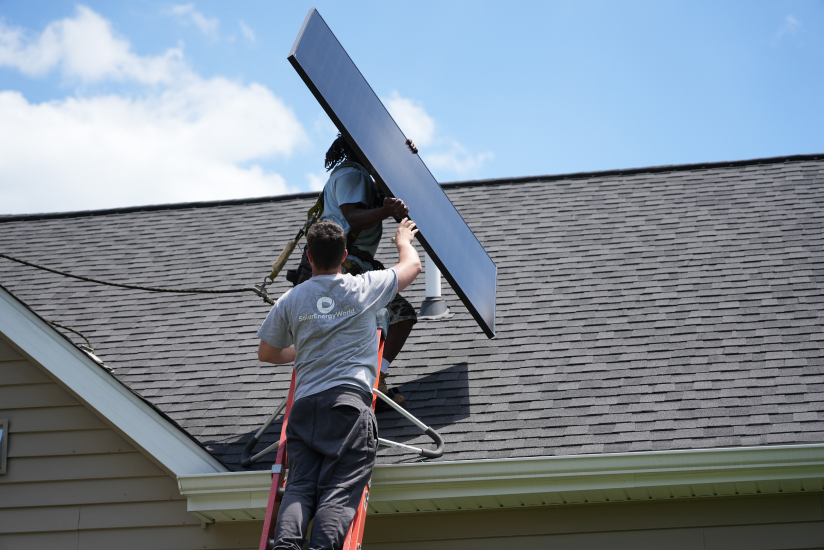Article
U.S. Solar Manufacturing Sector Poised for a Renaissance

By Whit Trovillion
The passage of the landmark Inflation Reduction Act (IRA) this summer is having a predictably huge impact on the transition to solar photovoltaic (PV) installation. The industry group Solar Energy Industries Association (SEAI) is predicting that the U.S. solar market will grow 40% faster than baseline projections thanks largely to the increased Investment Tax Credit (ITC), which increased from 25% to 30%. SEIA is predicting 62 gigawatts (GW) of additional installed capacity. Utility-scale PV is expected to lead industry growth with 162 GW in new capacity over the next 5 years. Residential installations, which were expected to cool in 2022 owing to the planned decrease in the ITC, supply-chain constraints, and a Commerce Department tariff investigation, are now expected to soar, particularly since the ITC is now locked in for a full decade, removing a large measure of consumer uncertainty. Residential PV set a record for five consecutive quarters with nearly 180,000 new households in the second quarter of 2022. The United Nations’ Authoritative International Energy Agency has recently predicted that renewables will represent 90% of global electricity generation is on course of overtake coal-fired generation by early 2025.
More than a quarter million Americans work in the solar industry at more than 10,000 companies in 50 states, generating almost $33 billion in private investment. Most of those jobs are in solar sales, design, and installation, but what has become of the once-dominant U.S. based manufacturing of solar hardware?
A Return of Manufacturing?
A less conspicuous aspect of the IRA are the incentives it creates for the rebirth of a domestic U.S. manufacturing base for PV components (modules and inverters), as well as other renewable energy industries such as turbines, batteries, and electric vehicles.
PV modules, which were invented in the U.S., were first manufactured at scale in U.S.-based production facilities. Over the years, production gradually shifted to Germany, the Republic of Korea, and ultimately China, where most modules are currently manufactured. Currently there are only five large-scale PV manufacturing facilities currently operating in the U.S. But that is poised to change and change quickly. Learn more about the history of solar energy in the U.S. with the story of Bell Labs and the invention of the first modern silicon solar cell in this article: Bell Labs And The First Modern Silicon Solar Cell
A large measure of fear, uncertainty, and doubt (FUD) is now dogging the Chinese PV manufacturing industry. Punitive tariffs have been imposed and the entire Chinese renewable sector is under the world’s scrutiny due to credible allegations of the use of forced labor by ethnic Uighurs, a Turkic minority in northwestern China which is being systematically persecuted. China stands accused of using slave labor to mine and refine polysilicon, a critical precursor for PV cell fabrication.
The IRA contains Advanced Manufacturing Production Credits for items such as turbine blades, inverters, battery cells, PV wafers and modules, and the mining of certain critical minerals. As a result, production of PV modules is poised to begin the process of shifting back to U.S.-based manufacturing facilities, with manufacturers announcing plans to scale up existing factories and start new ones. It is entirely possible to go solar with North American manufactured equipment if that’s an important consideration for you. Repatriating solar module manufacturing to the U.S. is important for many, but not all, American consumers and that process is now well underway. Here are just a few, plucked from recent headlines:
- First Solar (FSLR) announced earlier this month that it had completed site selection for its fourth U.S. solar panel factory. The company plans to invest more than $1 billion in a new plant in Alabama which it plans to have commissioned by 2025 to provide 3.5 GW of PV modules and more than 700 new, good manufacturing jobs. The CEO credited provisions of the IRA for making this massive investment possible.
- Enel North America (ENOC) announced earlier this month plans to build a large PV factory in the U.S. with capacity to produce 3 to 6 GW of PV modules annually. Its CEO also credited the IRA with making the decision possible. Site selection is expected by year’s end with commissioning in 2024 and scaling up to full capacity by 2025, creating up to 1,500 new American jobs.
- Other established U.S. based industry leaders like Freyr (FREY), SolarEdge (SEDG) and Enphase (ENPH) are exploring scaling up domestic manufacturing of optimizers, inverters, and consumer-scale storage. Piedmont Lithium (PLL), a mining concern, has also announced major investments and expansion for the storage of renewable energy product, a critical consideration for addressing the problem of intermittency.
- Miami-based energy storage company Amptricity recently announced plans for its first U.S. based manufacturing plant by 2024 to produce solid-state batteries for residential-scale storage. It plans to produce 4 GWh of batteries initially scaling up to 16 GWh. The company is considering sites in Texas, Arkansas, North Carolina, Arizona, and Tennessee. Their solid-state battery technology promises greater capacity, lifespan, safety, and recyclability than currently available lithium-ion chemistries.
Want a Free Solar Estimate?
Fill out the form to get started today.


